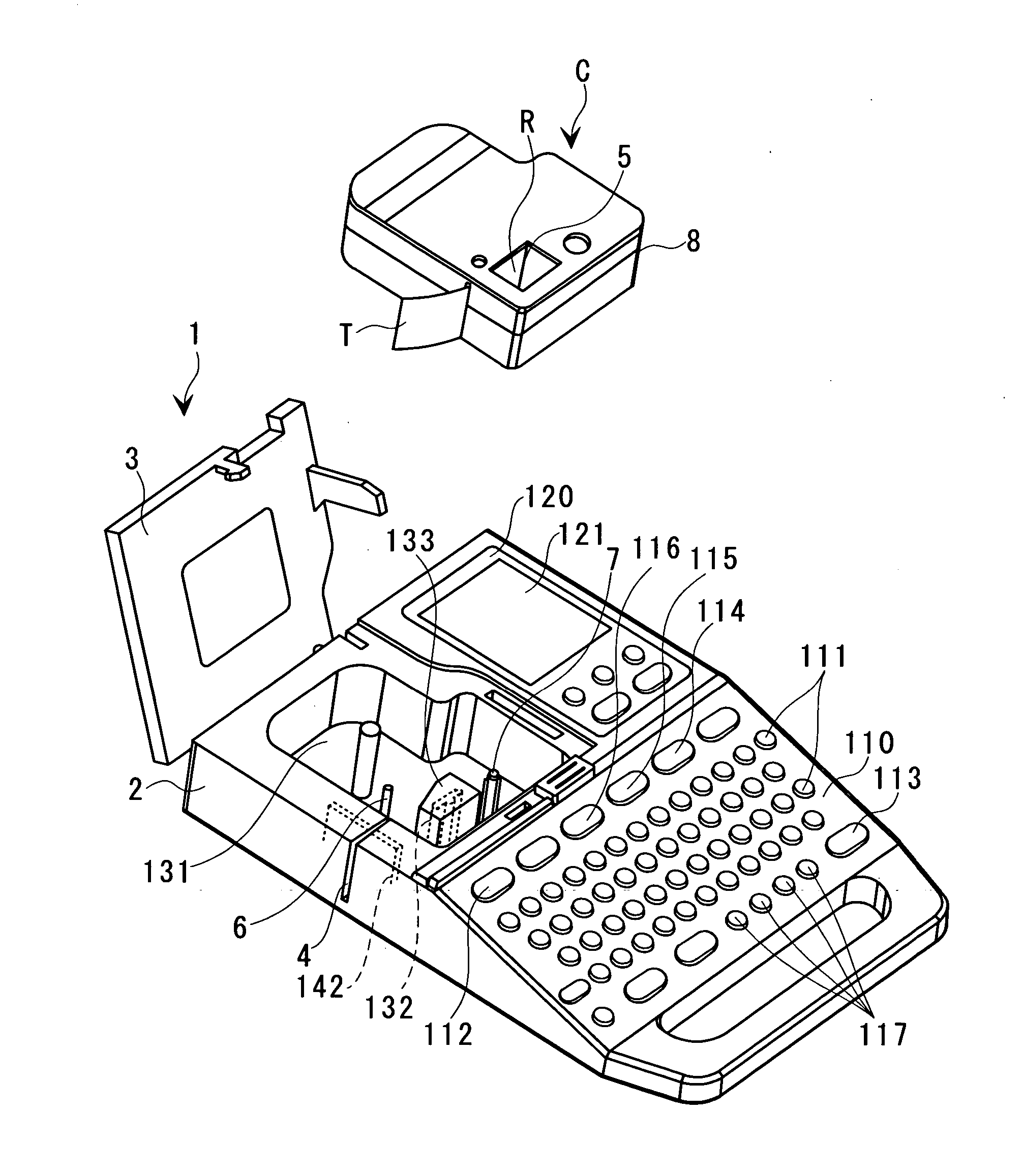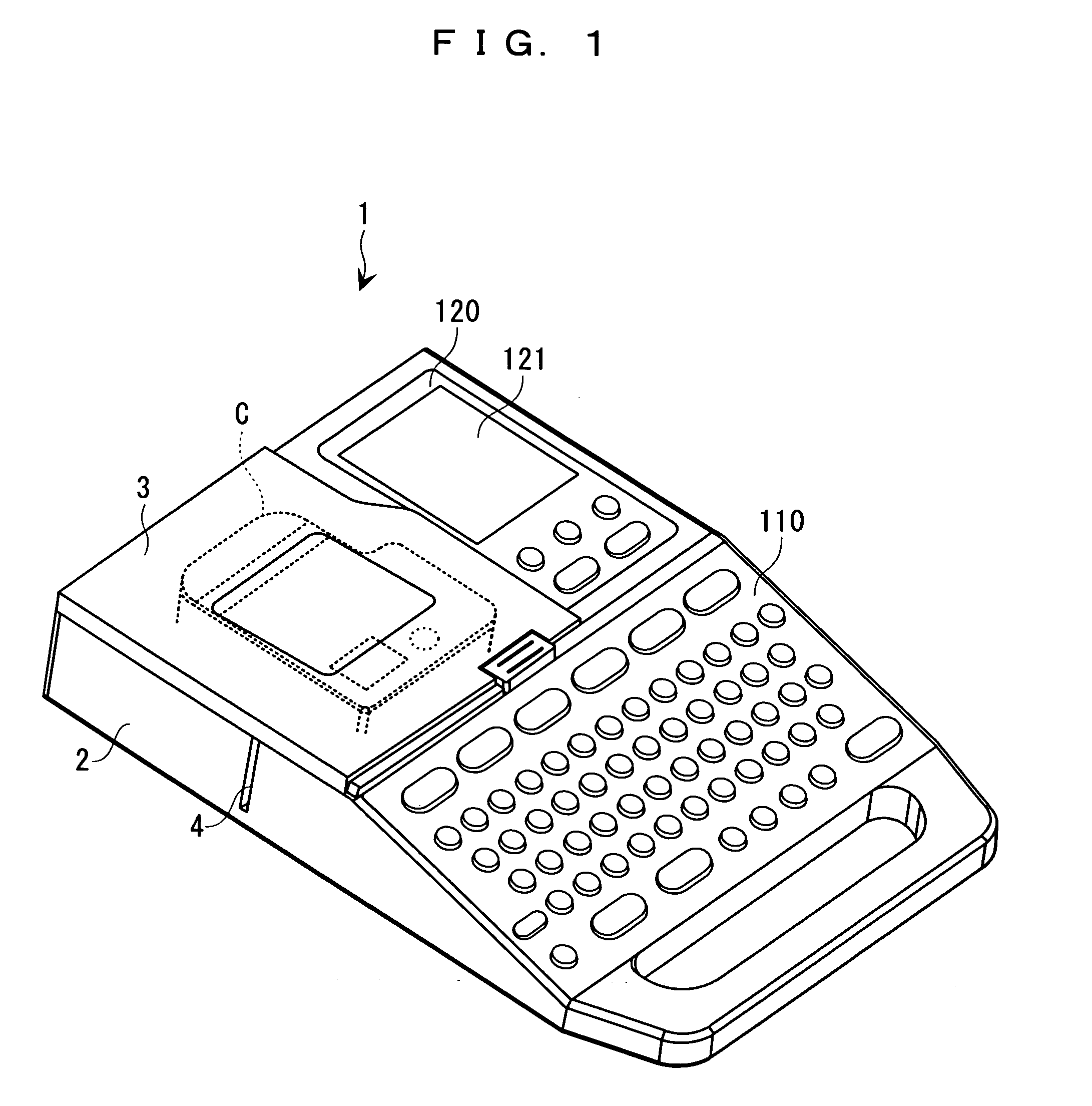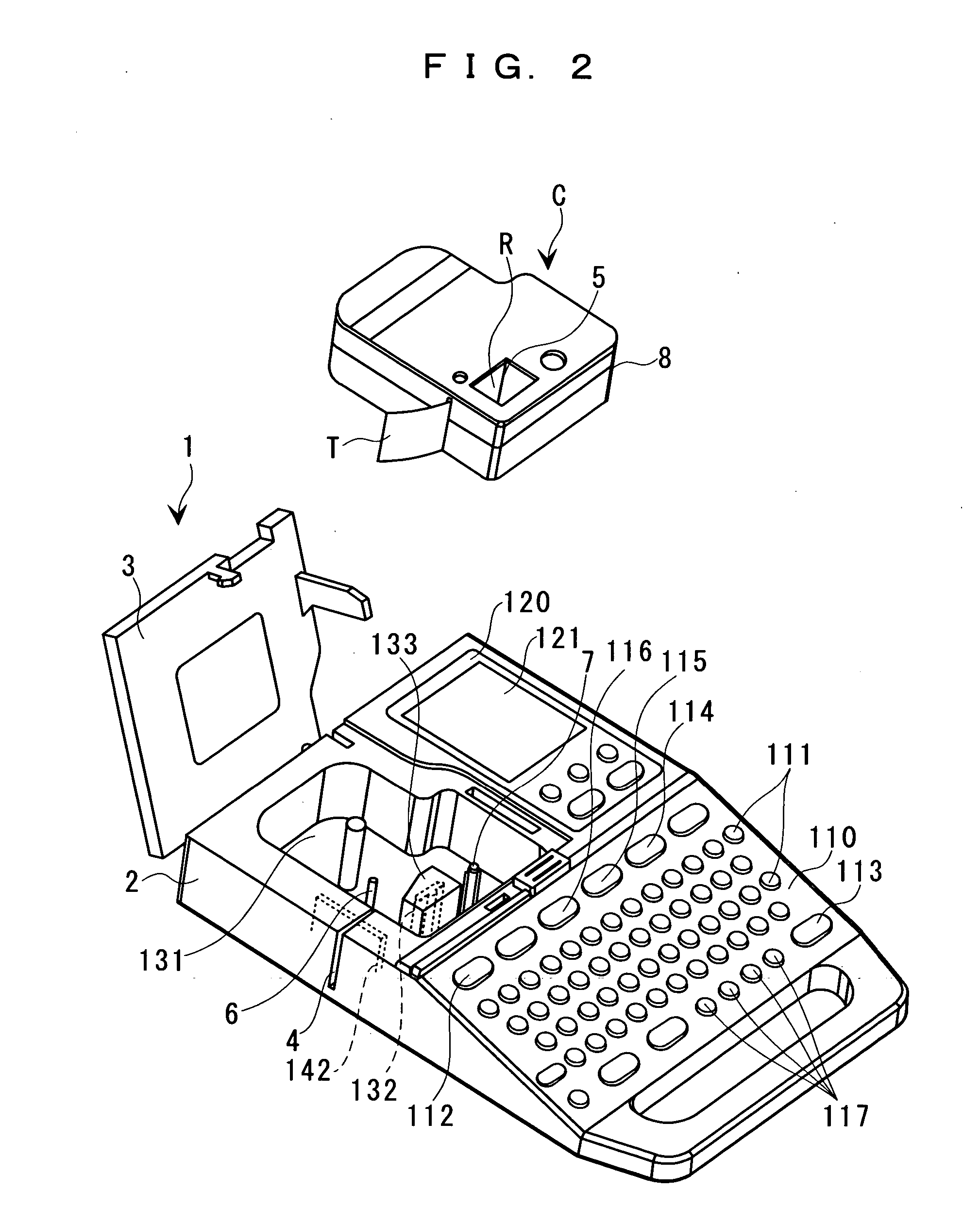Tape printing apparatus and tape printing method
a printing apparatus and tape technology, applied in the direction of identification means, instruments, seals, etc., can solve the problems of not being able to form laminated labels, the print face is not fully laminated or printed, and the printing apparatus cannot be used to print labels. , to achieve the effect of fine adjustment of the tape width of the folded print tape, and reducing the width of the folded tap
- Summary
- Abstract
- Description
- Claims
- Application Information
AI Technical Summary
Benefits of technology
Problems solved by technology
Method used
Image
Examples
first embodiment
[0068] First, description of the first embodiment in which the insufficient folding is performed will be made with reference to FIG. 7. On the initial screen for laminate printing as described above, if the user operates the cursor “↓” key 117, displays the “7 mm label” in reverse video (T12), and presses the select key 113, a character-input screen (T13) appears.
[0069] The tape printing apparatus 1 defines not only a folding-line position B (see FIG. 9A) but also a print-width range P (also see FIG. 9A) on the recording face which will be specifically described below, provided that the tape width of a folded tape is the “7 mm label.” An input guide (the segment of “FIRST LINE [” displayed on the character-input screen (T13) indicates only the number of rows to which characters can be inputted based on the defined print-width range P.
[0070] On the character-input screen displayed, characters of “ABCDE” are then inputted (T14). Note that if the character-mode key 115 (see FIG. 2) or...
second embodiment
[0081] Next, flow of folding involving the rear-face wind folding will be described below with reference to FIGS. 11A to 11E. A label R in each of the figures refers to a label cut into a desired length in which the characters of “ABCDE” and the auxiliary line as described in the second embodiment are printed on the recording face of the recording tape layer 10 of the tape T.
[0082] In the second embodiment, since the tape width of the folded tape is set to 5 mm, the folding-line position B is set at a distance of 7 mm from the folding end 10a of the recording tape layer 10, and the folding-line L is printed at a distance of 7 mm from the folding end 10a of the recording tape layer 10 of the tape T (FIG. 11A).
[0083] First, part of the separating piece 12 or the print recording piece 11 of the recording tape layer 10 is folded along the folding-line L to make a habitual folding line thereat (FIG. 11B). Next, the folded label R is restored to an initial state, and substantially the ha...
PUM
 Login to View More
Login to View More Abstract
Description
Claims
Application Information
 Login to View More
Login to View More - R&D
- Intellectual Property
- Life Sciences
- Materials
- Tech Scout
- Unparalleled Data Quality
- Higher Quality Content
- 60% Fewer Hallucinations
Browse by: Latest US Patents, China's latest patents, Technical Efficacy Thesaurus, Application Domain, Technology Topic, Popular Technical Reports.
© 2025 PatSnap. All rights reserved.Legal|Privacy policy|Modern Slavery Act Transparency Statement|Sitemap|About US| Contact US: help@patsnap.com



